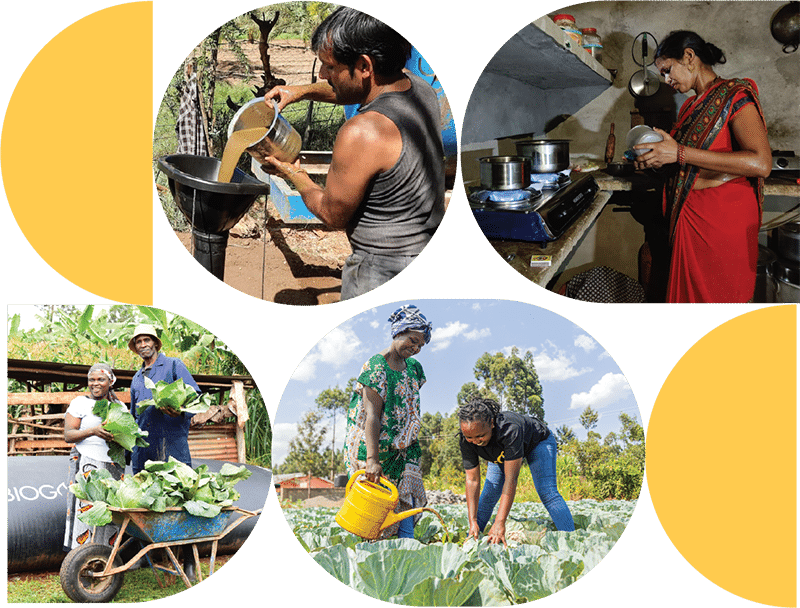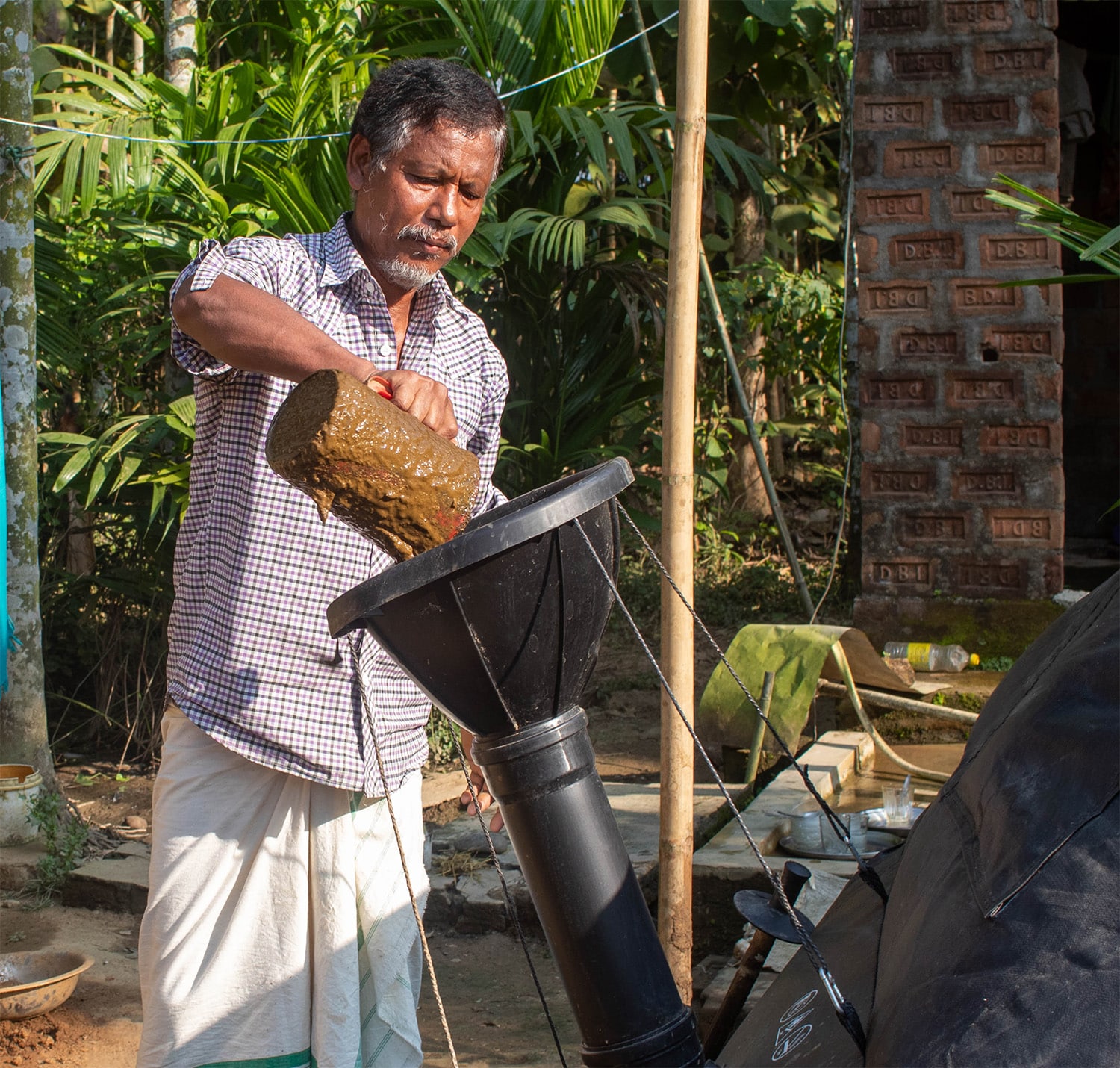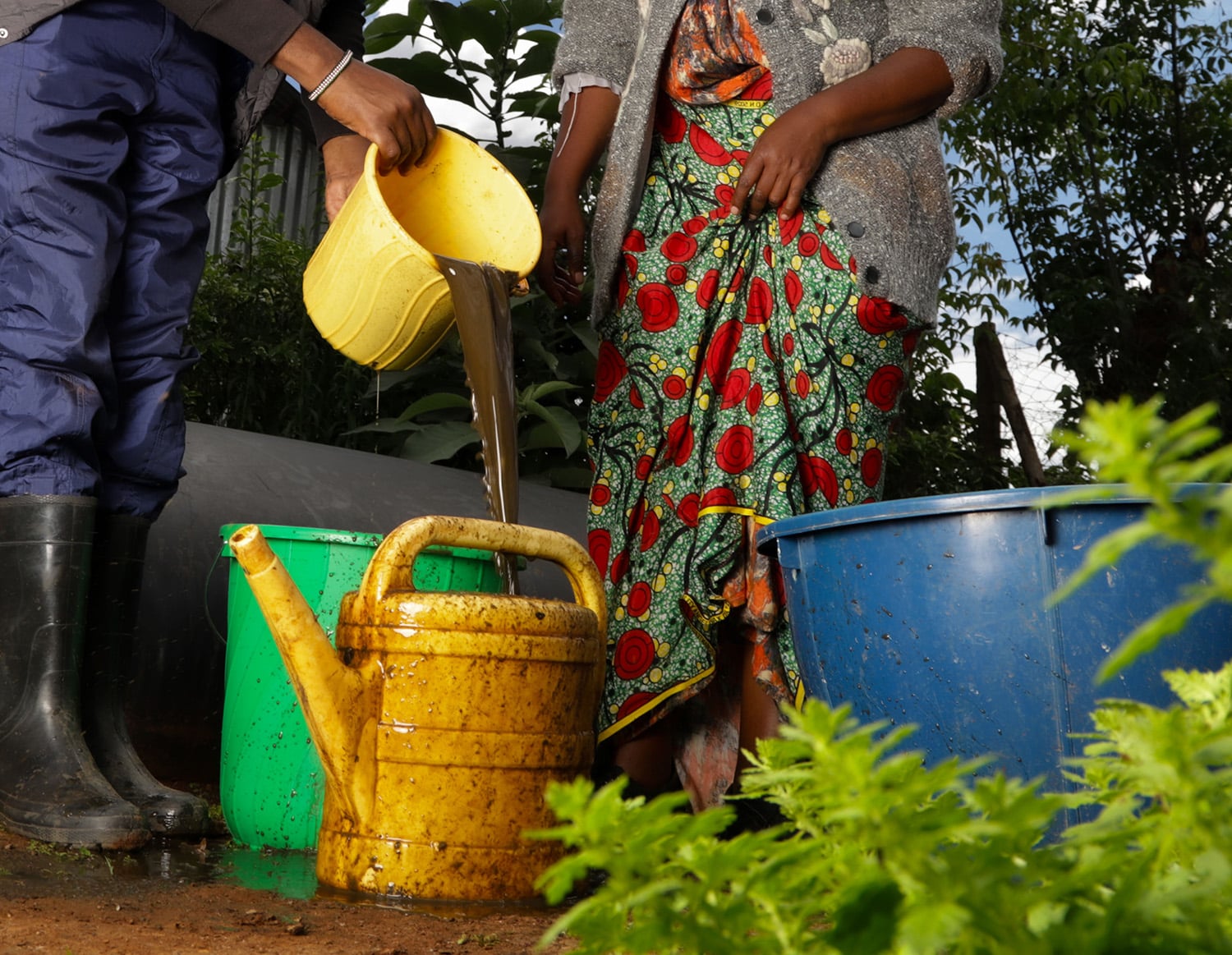Thousands of farmers globally already using biogas to live better and farm smarter by growing more and spending less. Easy to use, lasts for years, and helps farmers save money while improving farm’s soil and harvest.
The HomeBiogas Farmers System features an innovative above-ground design, enabling fast and scalable installations for impactful, large-scale projects.
This system transforms up to 50 liters of animal manure daily into clean cooking gas and liquid bio-fertilizer, providing an affordable and sustainable solution tailored to smallholder farmers.

I apply the liquid bio-fertilizer twice a week. My vegetable yields doubled without buying fertilizer! I’ve saved around $80 per season!

Organic waste is fed into the system daily

Anaerobic bacteria break down the material

Smoke-free cooking biogas (flammable methane) is running in kitchen stoves

100% Free Organic Fertilizer straight from the system is discharged
Our solutions do more than just empower farms and farmers. They also reduce carbon emissions and help mitigate climate change head-on by capturing and removing methane emissions, converting it into clean energy, avoiding the use of polluting fuels, and preventing deforestation.
The farm system is ideal for effective carbon projects.
Our vision is bold but simple: to bring clean energy and better farming to millions of off-grid families across the Globe, where the impact of waste-to-energy systems is both economic and ecological.

No, the biodigestion process helps to increase the amount of nutrients, micro-organisms and bio stimulants in the Bio-fertilizer and makes it easier for the soil to absorb.
Yes, you can. The Bio-fertilizer is a liquid that needs to be applied carefully because if it is too concentrated it can cause harm to the soil or plants over time. But applied in the correct concentration and application method, it is completely fine.
This Bio-fertilizer contains water, microorganisms, amino acids, biostimulants, minerals (all the essential nutrients required by the crops), and organic matter. All through natural processes.
It depends on the conditions of storage, after a week the difference is negligible.
There is a difference, farm yard manure is a solid and in the early stages of decomposition while bio-fertilizer is a result of decomposition enriched with bacteria and it is liquid and more easily absorbed in soil.
It depends on the size of the unit and the amount of organic matter you put in. It could produce between 50L – 150L a day!
On flat, level ground with direct sunlight and no further than 50 meters from the kitchen.
The size of the system is 7M long x 2M width x 80CM high.
Yes, it needs to be serviced every 8-12 months depending on the moisture content of the pellets.
You can use a maximum of up to 50 meters for optimal gas pressure on the stove.
The lifespan of the system is over 10 years.
Where cooking is done for an optimum amount of time (5-6) hours, there is rarely any excess gas. But if there is excess gas generated and not used, it escapes through the pressure release mechanism.
At the point of installation, there is one initial feeding of 800kgs of manure and 3500-5000 liters of water. There is no more feeding required during the wait period of the next 3 weeks (21 days).
After the initial feeding at the point of installation, the biological processes begin inside the system. Usable gas is generated after a period of 2-3 weeks (14-21 days).
Animal manure, the best type recommended is cow, pig or horse.
No. The system works by way of displacement. The outlet pushes out the bio-slurry, and the excess gas escapes through the pressure release mechanism near the outlet.
The system is safe, user friendly and meets both the ISO (International Organization for Standardization) 23590 standard and CE mark for biogas systems.




